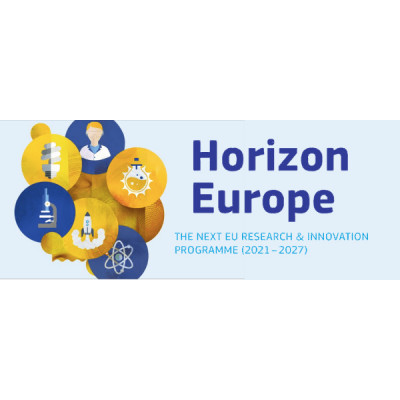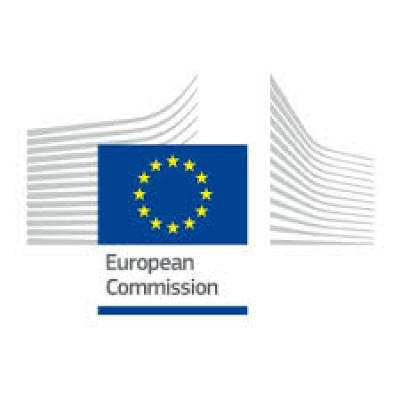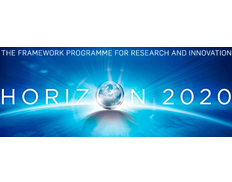
ATM application-oriented Research for Connected and Automated ATM
Details
Description
Call Updates
Oct 17, 2022 4:34:31 PM
Call HORIZON-SESAR-2022-DES-ER-01 has closed on the 13-10-2022.
72 proposals have been submitted.
The breakdown per topic is:
- HORIZON-SESAR-2022-DES-ER-01-WA2-1: 4
Evaluation results are expected to be communicated in February 2022.
Oct 5, 2022 3:30:34 PM
The fifth and last version of the SESAR 3 Questions and Answers document is now available under Topic Conditions / Documents / Additional documents.
Sep 14, 2022 8:32:09 PM
The fourth version of the SESAR 3 Questions and Answers document is now available under Topic Conditions / Documents / Additional documents.
Jul 22, 2022 7:57:55 AM
The third version of the SESAR 3 Questions and Answers document is now available under Topic Conditions / Documents / Additional documents.
Jun 7, 2022 10:00:10 PM
The second version of the SESAR 3 Questions and Answers document is now available under Topic Conditions / Documents / Additional documents.
May 16, 2022 9:33:31 AM
The first version of the SESAR 3 Questions and Answers document is now available under Topic Conditions/Documents/ Additional documents.
Apr 13, 2022 6:52:12 PM
The SESAR 3 Project Handbook is now available under Topic conditions and documents. Applicants are invited to read this document carefully when preparing their proposal, in order to comply with the needs defined by the SESAR 3 JU for its programme execution.
Apr 13, 2022 11:44:21 AM
The submission session is now available for: HORIZON-SESAR-2022-DES-ER-01-WA2-1(HORIZON-JU-RIA)
ATM application-oriented Research for Connected and Automated ATM
TOPIC ID: HORIZON-SESAR-2022-DES-ER-01-WA2-1
Programme: Horizon Europe Framework Programme (HORIZON)
Call: Digital European Sky Exploratory Research 01 (HORIZON-SESAR-2022-DES-ER-01)
Type of action: HORIZON-JU-RIA HORIZON JU Research and Innovation Actions
Type of MGA: HORIZON Action Grant Budget-Based [HORIZON-AG]
Deadline model: single-stage
Planned opening date: 07 April 2022
Deadline date: 13 October 2022 17:00:00 Brussels time
Project results are expected to contribute to the following expected outcomes.
- Environment. Project results are expected to demonstrate that the proposed solutions would have no negative impact on the environment (i.e. in terms of emissions, noise and/or local air quality) or on the potential improvement of the aviation environmental footprint.
- Capacity. Project results are expected to contribute to capacity by enhancing the management of separation minima, both for en-route airspace and the TMA, and the provision of meteorological information. At airport level, the solutions will enhance the calculation of arrival runway occupancy times and the resilience of runway throughput to meteorological disruptions, enhance departure queue management, improve visual separation procedures for the aerodrome circuit and support fully automated airport operations through improved predictability.
- Cost-efficiency. Project results are expected to justify the investment costs related to the adoption of automated technologies and tools.
- Safety. Project results are expected to maintain at least the same level of safety as the current ATM system, with higher levels of automation, especially through the identification of negotiation-based resolutions at conflict resolution and collision avoidance levels, safety nets for new separation modes and improved approach procedures into secondary airports in low-visibility conditions.
- Security. Project results are expected to maintain at least the same level of security as the current ATM system.
The SESAR 3 JU has identified the following innovative research elements that could be used to achieve the expected outcomes. The list is not intended to be prescriptive; proposals for work on areas other than those listed below are welcome, provided they include adequate background and justification to ensure clear traceability with the R&I needs set out in the SRIA for the connected and automated ATM flagship.
- Evolution of flight-rule concepts, separation management service concepts and airspace classification. This element covers the potential evolution of responsibility for separation provision in an environment where advanced detect and avoid (DAA) and electronic conspicuity systems are fitted to all participating traffic. Research should cover, individually and collectively, the role of the separator and the mode of separation provision; the need for and possible updates to or renewal of the airspace classification system; the definition and potential renewal of flight rules for manned and unmanned aircraft; and a potential review/qualification of the need for visual flight rules (VFR) flights to remain in visual meteorological conditions, including the need to remain clear of cloud, given the existence of advanced electronic systems that replace and/or augment the performance of the human eye. The research must assess the impact on all current airspace users, including main airlines, business aviation, general aviation, sports aviation and military aviation, as well as considering the impact on new entrants (both drones flying low and manned or unmanned aircraft flying at high altitude) (R&I need: advanced separation management (U-space integration and new separation modes)).
- Use of advanced meteorological information and capabilities (R&I need: advanced separation management (U-space integration and new separation modes)). This research covers the needs to:
- incorporate ensemble weather information into decision support tools that can be adapted for different ATM stakeholders;
- produce very high-resolution, very short-range weather forecasts using numerical weather prediction models and observational data assimilation;
- share very short-range weather forecasts based on Aircraft Meteorological Data Relay and observational data assimilation (e.g. predicted wind, wind shear) during the approach and landing phases. The research also covers the novel avionics and flight crew procedures required to use this information.
- Enhanced arrival/departure runway occupancy time. The scope includes enhancing runway occupancy time calculation, through efficient runway turn-off and a combination of existing optimised braking-to-vacate solutions, at pre-selected runway exits, and new applications to assist the flight crew in achieving efficient turn-off to the point where the aircraft has left the protected area of the runway. Similarly, the research should also enhance the departure runway occupancy time calculation, through more efficient line-up and take-off. The research should address potential on-board applications to assist the flight crew of a departing aircraft to achieve more efficient (fast, accurate, reliable and safe) line-up and take-off (R&I need: runway use optimisation through integrated use of arrival and departure TBS tools);
- Optimised and resilient runway throughput. This element investigates how to enhance MET resilience in low-visibility conditions and during thunderstorms, and considers the need for parallel or near-parallel instrument runway separations in the light of advanced technology and surveillance capabilities integrated with coupled AMAN / departure management (DMAN) and TBS toolkits for both arrivals and departures (R&I need: runway use optimisation through integrated use of arrival and departure TBS tools).
- Adaptation of ground and airborne safety nets to new separation modes. This element covers advanced separation management that will require close conformance monitoring of the negotiated and authorised flight trajectories throughout the execution phase, so that operations are not disturbed by unnecessary resolution advisories, in particular if lower separation minima are introduced/considered. Consideration of the level of independence of safety nets from other aspects of control will be critical, as the levels of autonomy automation of detection, classification, resolution and monitoring of conflicting profiles in the planning and tactical phases of ATM will significantly increase (R&I needs: integration of safety nets (ground and airborne) with the separation management function).
- TBO machine-to-machine flight deck to ATC negotiation. This element covers machine-to-machine negotiation-based conflict resolution. The development of mechanisms and tools for creating negotiation-based resolutions at conflict resolution and collision avoidance levels (e.g. what-if extended projected profile (EPP)-based tools, or ATC offering a choice to the FMS of two potential cruising levels) will be addressed. This is a flight deck to ATC solution (i.e. with airline operations centre involvement) (R&I need: advanced separation management (U-space integration and new separation modes)).
- Space-based multilateration. This element covers space-based multilateration through ranging by satellites already used for space-based VHF or ADS-B systems, with preference given to those used for space-based ADS-B, as this could serve to cross-check the GNSS position acquired through ADS-B (in the same way that Mode S radar has a double check). The development of an integrity parameter for space-based ADS-B downlink to ground system should also be covered. (R&I need: enabling the deployment of a performance-based CNS service offer),
- Arbitrary levels. This research is aimed at enabling aircraft to fly at any arbitrary flight level, as optimised by aircraft performance, weight and atmospheric conditions. Even/odd cruise level assignment should be based on traffic supply, rather than on the semi-circular rule (also known as the hemispheric rule). The results should enable the use of all flight levels in the European one-way ‘trunk routes’ concept (R&I need: advanced separation management (U-space integration and new separation modes).
- Additional extended AMAN capabilities. The scope includes investigating AMAN capabilities, focusing on the transfer of the predicted arrival holding times from the TMA to the upstream airspace to reduce holding, the use of ML for the refinement of AMAN algorithms, etc. (R&I need: intelligent queue management).
- Enhanced departure queue management. This element covers enhancing departure queue management through further automation and exchange of highly accurate trajectory information between all actors (i.e. airports, ANSPs and aircraft operators). ML and AI should be used to monitor differences between DMAN sequences and their implementation, in order to improve DMAN sequencing algorithms (R&I need: intelligent queue management).
- Data-sharing between airport collaborative decision-making (A-CDM) parties, arrival and departure managers, and TBS tools. This element focuses on data-sharing between A-CDM parties, arrival and departure managers, and TBS tools, to allow the dynamic optimisation of runway use based on prevailing operational needs (R&I need: runway use optimisation through integrated use of arrival and departure TBS tools).
- Digital coupled AMAN–DMAN function. This element is about enhancing coupled AMAN–DMAN functions using ML and AI techniques identify the most appropriate departing aircraft to make use of an arrival gap. This information is to be shared with airport systems to ensure that the departing aircraft is loaded in a timely manner and taxies to the right place at the right time to be ready to take off (R&I need: runway use optimisation through integrated use of arrival and departure TBS tools).
- Improved visual separation procedures for the aerodrome circuit. This element is about reviewing current minimum separation standards/procedures in the airport environment, to meet a minimum acceptable safety level (i.e. moving away from pre-determined separation standards). The research should look at improved visual separation procedures for the aerodrome circuit, for example using a combination of surveillance and system support, targeting busy airports with high VFR traffic, in particular those that need to integrate IFR and VFR traffic (e.g. Charleroi airport) (R&I need: runway use optimisation through integrated use of arrival and departure TBS tools).
- Application of physiological measurements to ATCOs. The aim is to research the application of physiological measurements to ATCOs (e.g. measuring brain waves to assess the level of attention, using speech recognition combined with physiological measurements to monitor stress, correlation of eye-movement patterns with the occurrence of events that are potentially safety relevant) (R&I need: role of the human).
- Trajectory broker in all phases of ATFM operation. This element covers the trajectory broker layer, including research on how to make better use of available capacity in all phases of ATFM operation (long-term, medium-term, short-term and execution phases) and in all areas (airport, TMA, en route), addressing technical aspects but also considering the necessary regulatory/organisational changes (R&I need: network-wide synchronisation of trajectory information).



